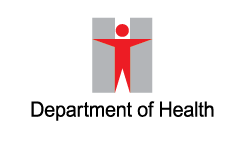Human Metapneumovirus Infection
Causative agent
Human metapneumovirus (HMPV) is a single stranded, RNA virus and can cause acute respiratory tract infections in all ages. The virus has been reported worldwide since it was first reported in 2001. HMPV infection can occur all year round and is more common in late spring and summer locally.
Clinical features
Children, elderly and persons who are immunocompromised are at higher risk of this infection. Symptoms caused by HMPV is usually mild and self-limited. Patients usually present with fever, cough, nasal congestion, difficulty in breathing or shortness of breath. HMPV infection may progress to bronchiolitis or pneumonia.
Mode of transmission
HMPV can be transmitted through respiratory droplets (e.g. by coughing or sneezing), contact with secretions of patients, or contact with contaminated surfaces or environment.
Incubation period
The incubation period is usually 3 - 6 days.
Management
In general, patients are managed with supportive treatment. Patients should also maintain good hydration. Oxygen therapy and mechanical ventilation may be needed in severe cases.
Prevention
Vaccine is not available at the moment. Members of the public are advised to maintain good personal and environmental hygiene to reduce their chance of getting infection:
1. Maintain good personal hygiene- The wearing of mask is advised for the following situations -
- any persons with fever or respiratory symptoms;
- any persons who are visiting or working in high risk places such as residential care homes for the elderly, residential care homes for persons with disabilities, and clinical areas of healthcare facilities; and
- high risk persons (e.g. persons with underlying medical conditions or persons who are immunocompromised) who are going to crowded places such as public transport.
- When an increasing trend in activity of respiratory viruses is expected, high risk persons are recommended to wear a surgical mask when visiting public places, while the public should also wear a surgical mask when taking public transportations or staying at crowded places.
- It is important to wear a mask properly, including hand hygiene before wearing and after removing a mask. For details on proper mask wearing, please visit CHP website at www.chp.gov.hk/files/pdf/use_mask_properly.pdf.
- Perform hand hygiene frequently, especially before touching one’s mouth, nose or eyes; before eating; after using the toilet; after touching public installations such as handrails or door knobs; or when hands are contaminated by respiratory secretion after coughing or sneezing.
- Wash hands with liquid soap and water, and rub for at least 20 seconds. Then rinse with water and dry with a disposable paper towel or hand dryer. If hand washing facilities are not available, or when hands are not visibly soiled, hand hygiene with 70 to 80% alcohol-based handrub is an effective alternative.
- Cover your mouth and nose with tissue paper when sneezing or coughing. Dispose of soiled tissues into a lidded rubbish bin, then wash hands thoroughly.
- When having respiratory symptoms, wear a surgical mask, refrain from work or attending class at school, avoid going to crowded places and seek medical advice promptly.
- Build up good body immunity by having a balanced diet, regular exercise, adequate rest, do not smoke and avoid alcohol consumption.
- Infected person should avoid contact with children, the elderly or those with weakened immunity.
- Regularly clean and disinfect frequently touched surfaces such as furniture, toys and commonly shared items with 1 in 99 diluted household bleach (mixing 10 ml of household bleach containing 5.25% sodium hypochlorite with 990 ml of water), leave for 15 to 30 minutes, and then rinse with water and keep dry. For metallic surface, disinfect with 70% alcohol.
- Use absorbent disposable towels to wipe away obvious contaminants such as respiratory secretions, and then disinfect the surface and neighbouring areas with 1 in 49 diluted household bleach (mixing 10 ml of household bleach containing 5.25% sodium hypochlorite with 490 ml of water), leave for 15 to 30 minutes and then rinse with water and keep dry. For metallic surface, disinfect with 70% alcohol.
- Maintain good indoor ventilation. Avoid going to crowded or poorly ventilated public places; high-risk individuals may consider putting on surgical masks while in such places.
- Clean and disinfect eating and drinking utensils after use can reduce the risk of spread of the disease.
















